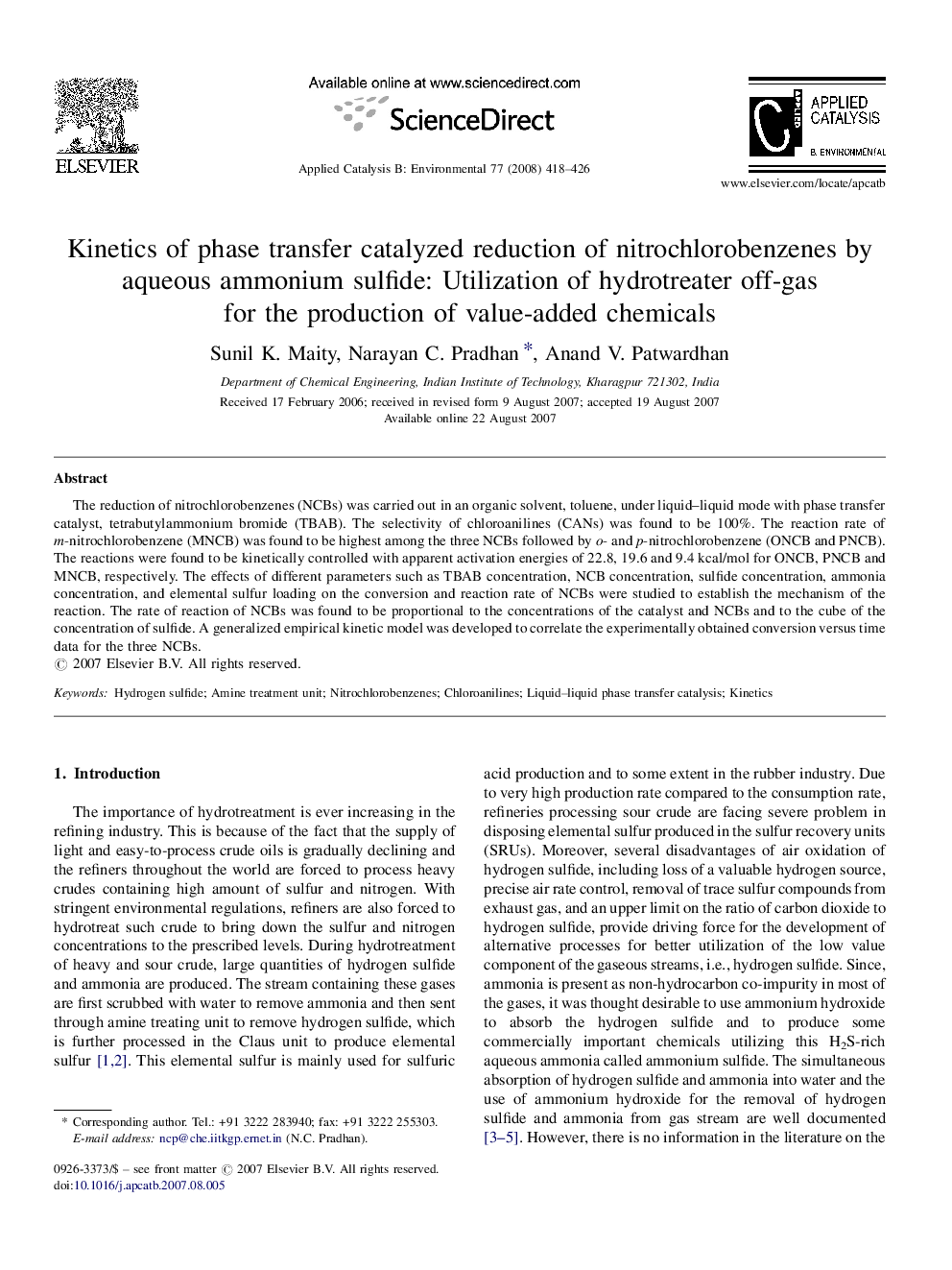| Article ID | Journal | Published Year | Pages | File Type |
|---|---|---|---|---|
| 48410 | Applied Catalysis B: Environmental | 2008 | 9 Pages |
The reduction of nitrochlorobenzenes (NCBs) was carried out in an organic solvent, toluene, under liquid–liquid mode with phase transfer catalyst, tetrabutylammonium bromide (TBAB). The selectivity of chloroanilines (CANs) was found to be 100%. The reaction rate of m-nitrochlorobenzene (MNCB) was found to be highest among the three NCBs followed by o- and p-nitrochlorobenzene (ONCB and PNCB). The reactions were found to be kinetically controlled with apparent activation energies of 22.8, 19.6 and 9.4 kcal/mol for ONCB, PNCB and MNCB, respectively. The effects of different parameters such as TBAB concentration, NCB concentration, sulfide concentration, ammonia concentration, and elemental sulfur loading on the conversion and reaction rate of NCBs were studied to establish the mechanism of the reaction. The rate of reaction of NCBs was found to be proportional to the concentrations of the catalyst and NCBs and to the cube of the concentration of sulfide. A generalized empirical kinetic model was developed to correlate the experimentally obtained conversion versus time data for the three NCBs.
